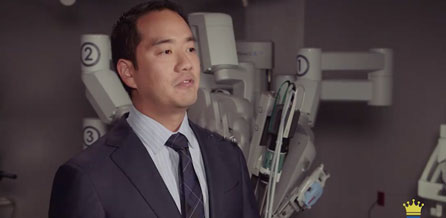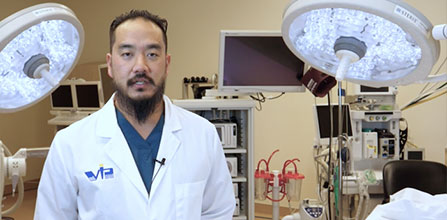Endoscopic Weight Loss Procedures
Endoscopic weight loss procedures are a relatively new addition to the continuum of care for patients with obesity. Unlike surgical interventions, no incisions are made in the abdomen. Instead, specially-made tools, including a high-definition camera, are introduced into the stomach through the mouth. They are made to pass through the esophagus without causing damage, allowing the surgeon to perform the procedure from within. Endoscopy may be appropriate for patients who are not good candidates for surgical intervention or who fear surgery. Generally speaking, while they may be very effective for long-term weight loss, they do not have the same weight loss potential as stapled surgical procedures.
There are two forms of endoscopic procedures currently available today. Each has pros and cons, and speaking to Dr. Tsuda is the next step toward understanding if either is appropriate for your particular circumstance.
Gastric Balloon
The gastric balloon represents a temporary non-surgical option for patients looking to lose up to 10-15% of their body weight. There are different forms of gastric balloons, but they each work similarly. The uninflated gastric balloon is introduced into the stomach through endoscopy or simply by swallowing a pill. Once appropriately placed within the stomach, the weight loss surgeon or gastroenterologist inflates the balloon using sterile saline (salt water) or air. The balloon takes up space within the abdomen and reduces the amount of food a patient can eat. For patients interested in the swallowable balloon, which is currently not approved in the United States, Dr. Tsuda assists with arrangements for patients to visit South America, where they can have it placed by a trusted medical provider.
Gastric balloons have generally shown mixed long-term success because they are removed after six months. While a second balloon can be placed, these procedures are inherently temporary. As such, patients must improve their diet and exercise choices to maintain their weight loss. Health insurance plans do not cover gastric balloons, so patients should expect to pay out of pocket for the procedure.
Learn more about the swallowable gastric balloon
Endoscopic Sleeve Gastroplasty (ESG)
The endoscopic sleeve gastroplasty is similar in principle to the traditional surgical gastric sleeve. During the procedure, an endoscope is placed into the stomach through the mouth and esophagus. The stomach is reduced in volume by placing sutures strategically. When tightened, the stomach folds on itself and ends up about 30% of its original volume. Most patients can lose up to 20% of their body weight with relatively few side effects and a shorter recovery time than a sleeve performed surgically. An endoscopic gastroplasty may also be performed as an original procedure in patients for whom a gastric sleeve has not offered sufficient weight loss or who gained weight due to pouch dilation.
The FDA recently approved the ESG procedure, and while it still does not have widespread insurance coverage, it can be performed on a cash-pay basis. Patients should speak to their weight loss surgeon to understand more about the viability of an ESG for their situation.



